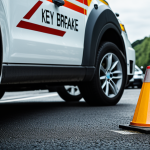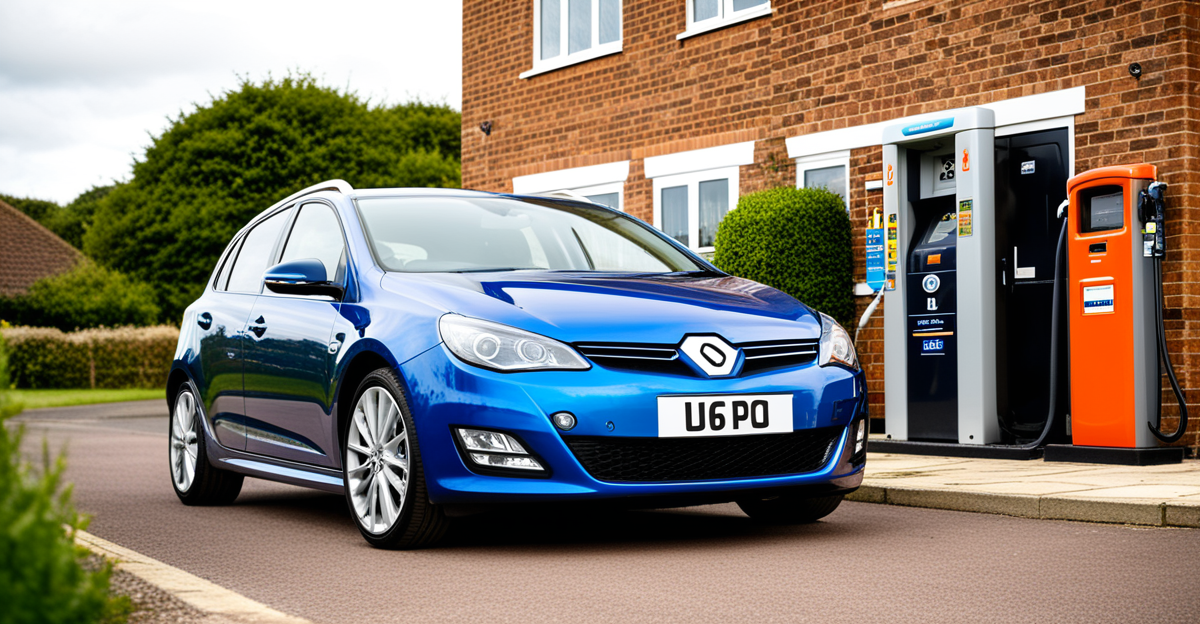Step-by-Step Process for Converting a UK Petrol Car to LPG
Converting a petrol car to LPG in the UK involves several crucial stages to ensure safety, compliance, and optimal performance. The LPG conversion UK journey begins with an initial assessment of vehicle suitability. Not every petrol model is ideal for LPG conversion; factors such as engine type and condition are evaluated by an approved installer. Choosing a certified installer is essential, as only those authorised can guarantee proper fitting and meet UK safety standards.
Once suitability is confirmed, the petrol to LPG process moves to installation. This includes mounting the LPG tank, fuel lines, and control systems tailored to the vehicle’s specifications. Each step adheres to strict UK regulations, ensuring both mechanical integrity and operational safety.
Also to read : Comprehensive Handbook for Troubleshooting and Repairing UK Vehicle Radiator Fan Issues: Detailed Step-by-Step Solutions
Following installation, the focus shifts to legal procedures. Vehicle owners must complete the required legal paperwork. This includes submitting documentation to the DVLA and obtaining conversion certification. The paperwork ensures the car’s registration accurately reflects the change to LPG fuel, a vital step to maintain road legality and insurance coverage.
By adhering to these vehicle conversion steps, motorists can confidently transition their cars while respecting all UK standards related to LPG use.
Also to discover : Ultimate DIY Handbook: How to Install a Heads-Up Display (HUD) in Your UK Vehicle
Step-by-Step Process for Converting a UK Petrol Car to LPG
The LPG conversion UK process begins with a detailed assessment of your car’s suitability. This assessment checks the engine type, condition, and compatibility with LPG components to ensure safe and efficient operation. Only after confirming suitability should you select an approved installer authorised under UK regulations, as they are trained to perform the petrol to LPG process correctly.
Installation involves mounting the LPG tank and integrating fuel lines and control systems tailored to your vehicle’s specifications. Precision is vital to maintain engine performance and safety. The vehicle conversion steps also include configuring the fuel management system to switch seamlessly between petrol and LPG as needed.
Upon completing installation, legal steps must be followed. This includes obtaining conversion certification from the installer, which verifies that your vehicle meets all safety standards. You need to submit documentation to the DVLA to update your vehicle’s registration and ensure compliance with LPG legal requirements UK law mandates.
Following these steps carefully helps guarantee your conversion is safe, legal, and optimised for the long term.
Navigating UK Legal Requirements for LPG Conversion
Understanding the LPG legal requirements UK is crucial for a compliant and safe conversion. The UK mandates that any vehicle converted to LPG must meet strict vehicle compliance standards, verified through an authorised inspection. This ensures the installation follows approved safety and engineering criteria.
Once the installation is complete, obtaining conversion certification is essential. This certificate confirms the system is fitted correctly and safely, allowing vehicle owners to register the changes with the DVLA. Without this documentation, the car’s updated fuel status cannot be legally recognised, potentially invalidating insurance and roadworthiness.
Car owners also have ongoing legal responsibilities post-conversion. They must inform their insurance providers about the LPG modification, ensuring policies reflect the altered fuel system. Further, LPG vehicles require maintenance checks consistent with UK safety standards, reinforcing compliance with MOT regulations.
In summary, the legal pathway involves inspection, certification, and registration. All these steps protect both the vehicle owner and the wider public by ensuring the LPG installation performs safely throughout the vehicle’s lifespan. Keeping these legal requirements in mind helps avoid fines or invalid insurance, thus securing a smooth transition in the petrol to LPG process.
Step-by-Step Process for Converting a UK Petrol Car to LPG
The LPG conversion UK process starts with an initial assessment of vehicle suitability. This step focuses on evaluating the car’s engine type, condition, and compatibility with LPG components. Cars with certain engine designs or wear levels may not be ideal candidates for conversion. This ensures the petrol to LPG process only advances when safe and efficient operation is feasible.
Choosing an approved installer is the next critical stage. Only installers certified under UK regulations possess the necessary experience to execute the vehicle conversion steps correctly. They handle precise installation tasks, including fitting the LPG tank, fuel lines, and managing the integration of control systems that enable smooth switching between fuels.
The final step involves managing legal paperwork and essential documentation. This includes submission of conversion certification to the DVLA, which legally updates your vehicle registration status. Without completing these papers, the conversion lacks official recognition, possibly causing issues with insurance and road legality. Ensuring these documents are in place confirms that the conversion complies with strict UK standards and regulations.
Step-by-Step Process for Converting a UK Petrol Car to LPG
The LPG conversion UK process begins with a thorough initial assessment of vehicle suitability. This evaluates the engine design, age, and overall condition to determine if the car can safely undergo the petrol to LPG process. Engines with excessive wear or complex fuel management systems may not be appropriate candidates, as these factors can affect performance and safety post-conversion.
Choosing an approved installer is vital in the vehicle conversion steps. Certified professionals in the UK have the expertise to install the LPG system correctly, including careful fitting of the LPG tank, fuel lines, and integration of the fuel management controls. Their knowledge ensures adherence to UK safety codes and guarantees that the petrol to LPG process enhances rather than detracts from vehicle performance.
Once installation is complete, owners must handle legal paperwork meticulously. Submitting conversion certification and updating the vehicle registration formally records the LPG modification. This documentation is essential to maintain legal compliance and confirms the conversion meets all UK standards. Skipping this step could risk invalid insurance or legal penalties.
Every stage of the LPG conversion UK process—from assessment through certification—works together to provide a safe, efficient transition from petrol to LPG fuel.
Step-by-Step Process for Converting a UK Petrol Car to LPG
The LPG conversion UK process unfolds through carefully planned vehicle conversion steps designed to ensure safety and compliance. It starts with an initial assessment of vehicle suitability, where professionals examine the engine type, condition, and compatibility with LPG systems. This stage is crucial because not all petrol cars are fit for conversion; engines that are heavily worn or use advanced fuel injection may face challenges in the petrol to LPG process.
After suitability confirmation, selecting an approved installer registered under UK regulations is essential. These specialists handle the technical installation, including mounting the LPG tank and integrating fuel lines and control units tailored to your car’s make and model. Their expertise guarantees adherence to safety codes and maximises fuel system efficiency.
The final phase involves completing legal paperwork. You must obtain a conversion certification from the installer, confirming compliance with safety and engineering standards. This certificate is submitted alongside other documents to the DVLA to update your vehicle registration, ensuring your car’s LPG status is legally recognised. Missing this step can lead to insurance issues or non-compliance with UK laws.
Step-by-Step Process for Converting a UK Petrol Car to LPG
The LPG conversion UK journey begins with a detailed initial assessment of vehicle suitability. This evaluation focuses on the engine’s make, age, and mechanical condition to confirm it can safely handle LPG fuel. The petrol to LPG process may be unsuitable for vehicles with highly complex fuel injection systems or significant engine wear, as conversion could compromise performance or safety.
Next, selecting an approved installer registered under UK regulations is critical. These certified professionals perform the precise vehicle conversion steps, including the installation of the LPG tank, fuel lines, and control units, ensuring compliance with safety standards. Using an approved installer also guarantees access to proper conversion certification necessary for legal recognition.
Legal paperwork forms the final stage. After installation, owners must submit the conversion certification to the DVLA to update the vehicle registration. This documentation confirms the car now runs on LPG and keeps it compliant with UK laws. Skipping these steps risks invalid insurance and non-compliance issues. Completing all vehicle conversion steps correctly ensures a safe, legal, and efficient transition from petrol to LPG fuel.
Step-by-Step Process for Converting a UK Petrol Car to LPG
The LPG conversion UK process consists of carefully coordinated vehicle conversion steps to guarantee a safe and efficient upgrade. It begins with an initial assessment of vehicle suitability, where the authorised installer examines the engine type, age, and condition. This step ensures the car’s compatibility with LPG and helps determine if the petrol to LPG process will enhance or hinder performance. Engines with complicated fuel systems or heavy wear may not qualify for conversion.
Selecting an approved installer is critical. These certified professionals are trained to carry out intricate installation tasks—mounting the LPG tank, fitting fuel lines, and integrating the control systems that manage fuel switching. Their expertise ensures adherence to UK safety standards, maximising reliability and longevity of the conversion.
After installation, completing the legal paperwork is essential. This includes securing the conversion certification from the installer, which verifies the system meets UK safety and compliance standards. The certification must be submitted to the DVLA to update your vehicle’s registration. Without these formal steps, your conversion may lack legal recognition, risking insurance issues and non-compliance with UK regulations. Taking these detailed steps confirms your LPG conversion is both effective and lawful.











